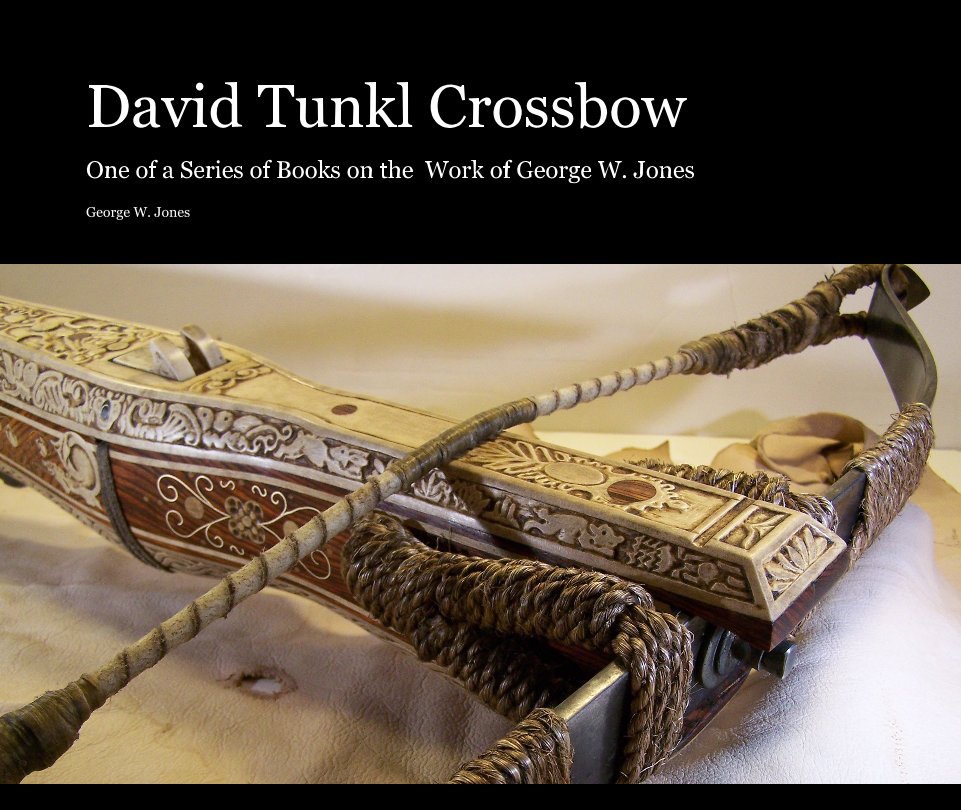David Tunkl Crossbow
One of a Series of Books on the Work of George W. Jones
von George W. Jones
Dies ist der Preis, den Ihre Kunden sehen. Listenpreis bearbeiten
Über das Buch
" There is a definite demarcation between a book review and an art critique, or museum curation. Those latter skill sets are beyond the scope of this humble book reviewer, and are best left to the professionals who study the history of firearms of specific ages throughout civilization. What I can attest to is the impact this book has on the reader, and how modestly George W. Jones narrates his captions of his macro-focused photographs demonstrating his extraordinary skill as an artisan of miniatures and replicas.
In this book titled, David Tunkl Crossbow, George W. Jones takes the reader on a step-by-step process of the design of the crossbow, paying particular attention to his choices of materials, the detail of his inletting skills, and the mechanical integrity of the device. Respectfully defining all specialized words used in the creation of a 17th century replica, the reader is brought up a wrung of vernacular and thus appreciation for the immense level of skill and attention to detail.
I found most interesting two quotes inserted in the book written by the second Lateran Council, under Pope Innocent 11, April, 1139. “We prohibit under anathema that murderous art of crossbowmen and archers, which is hated by God, to be employed against Christians and Catholics from now on.” And the second quote, “As soon as peace is restored, we will banish from the kingdom all foreign born knights, crossbow men, sergeants and mercenary soldiers who have come with horses and arms to the kingdom’s hurt.” These quotes show the sociological effect of the quantum leap weapons took with the advent of the crossbow. The significance of the device was, for the first time, a technological plateau where the operator need not have the strength nor skill of a warrior, yet only the possession of the weapon and the ability to point and shoot. Knowing how this device has shifted deathly power from the soldier to that of the common citizen became a concern to the Church.
As an oversized “coffee-table” format, with glossy paper using reverse white on black type, this book is impressively dramatic with its presence and quality of printing. Although terse in words, the images speak for themselves. Chronologically arranged depicting the year of work which went into the creation of the crossbow, the reader gets a feel for the labor of love George W. Jones ensconces into his work. This book is awe inspiring to any age reader, would indeed make a great gift, and is a fitting tribute to the art of George W. Jones".
Eigenschaften und Details
-
Projektoption: Querformat groß, 33×28 cm
Seitenanzahl: 40 - Veröffentlichungsdatum: Aug. 27, 2010
- Schlüsselwörter "Pacific, Book, Review:, http://www.facebook.com/n/?profile.php&id=100001274416321&v=wall&story_fbid=149876825032191&mid=2e4783fG2db0b2bfG73f0140G13&n_m=georgepublishing%40aol.com"
Über den Autor
George W. Jones was born in Cleveland, Ohio, in 1945. He won a Gold Medal in Fine Arts and a full-tuition scholarship to the Cleveland Art Institute at the age of 16, and a 5-year contract with American Greetings Cards Company in the National Scholastic Art Competition of 1962 (which he turned down to pursue other interests). In 1993, George won the National Rifle Association's coveted Silver medal, and in 1995, their Best Arms Award recommendation for his miniature. In 1988, George's work was a part of a 10-city, one-year tour of Japan, as well as the prestigious "Carre De Ore", in Montelimar, France, that same year. George’s work has appeared in the displays of numerous public and private American collections and museums, including The Washington D.C. Museum of Toys and Miniatures in 1986, and the Gene Autry Museum in Los Angeles, CA, in 1993. George was a featured guest in a two-part series on The Third Eye, a syndicated


